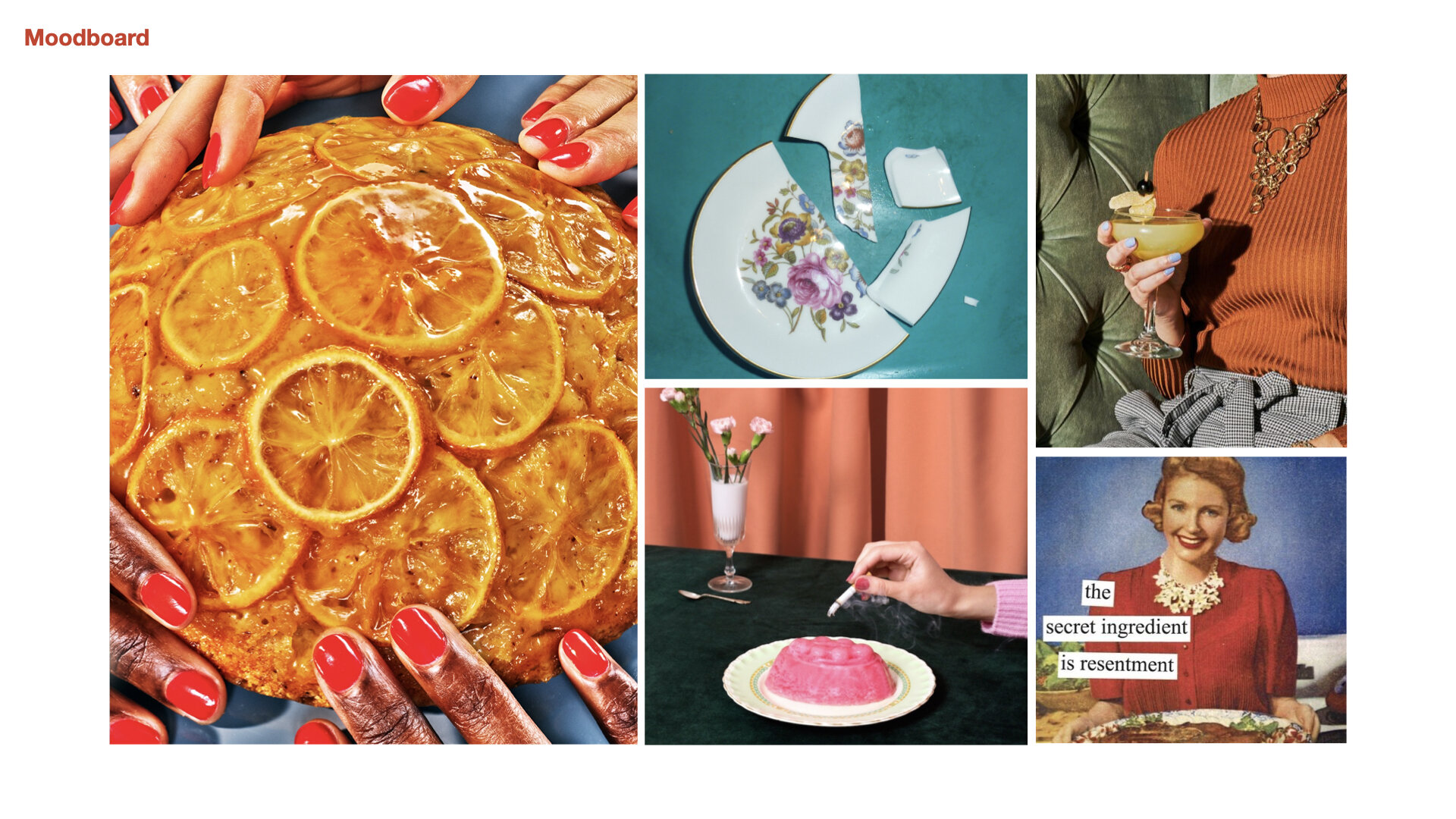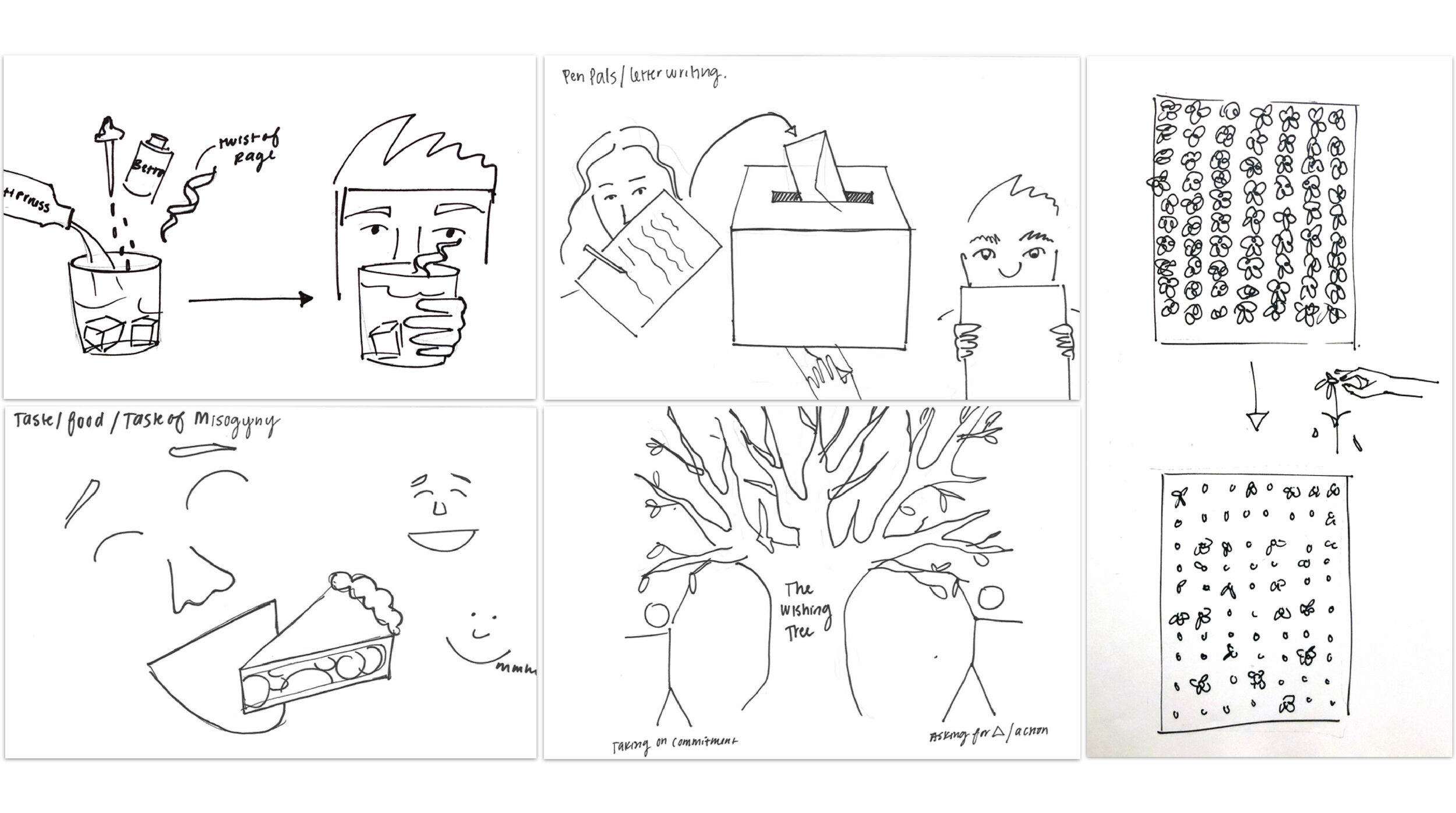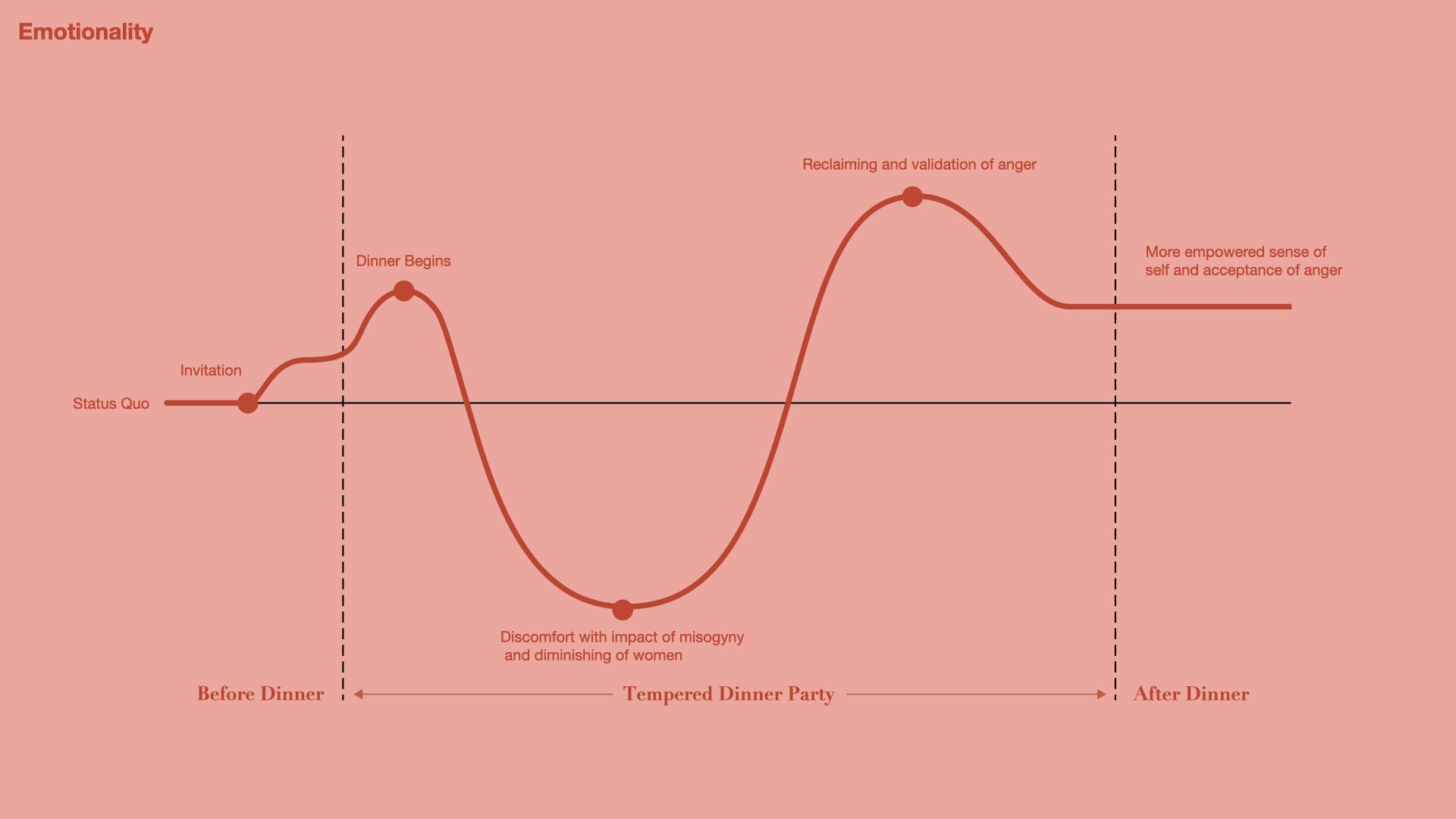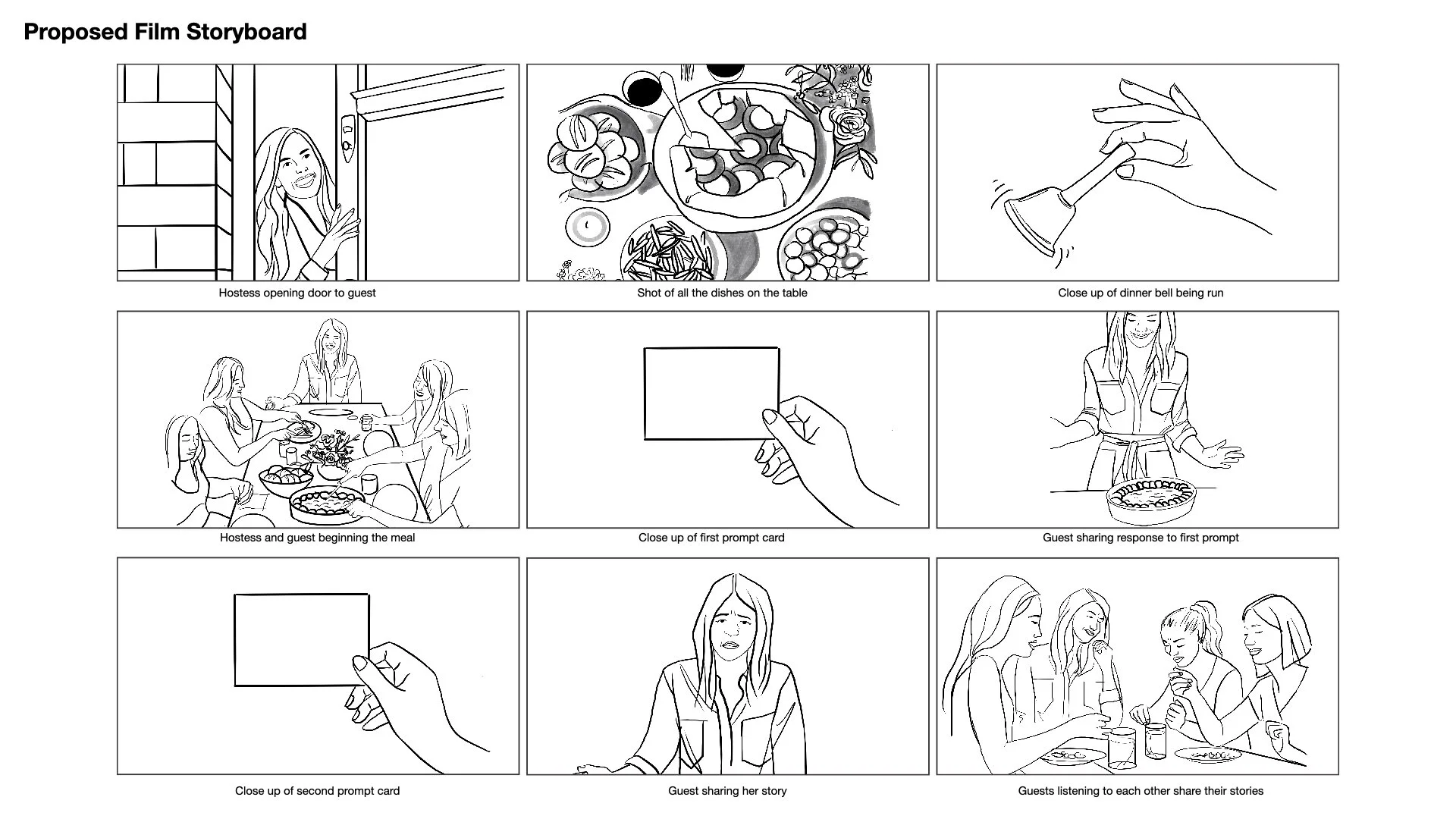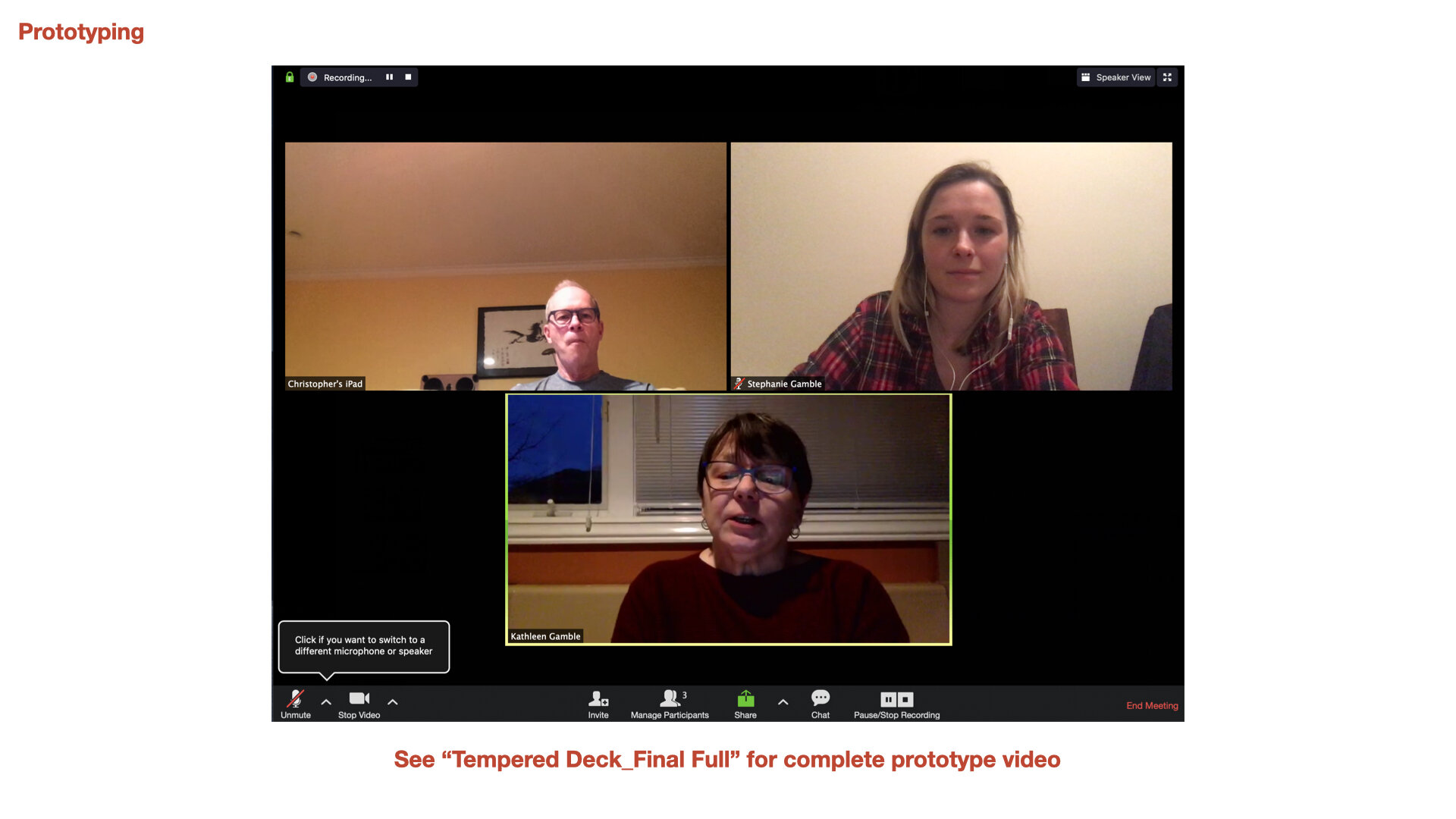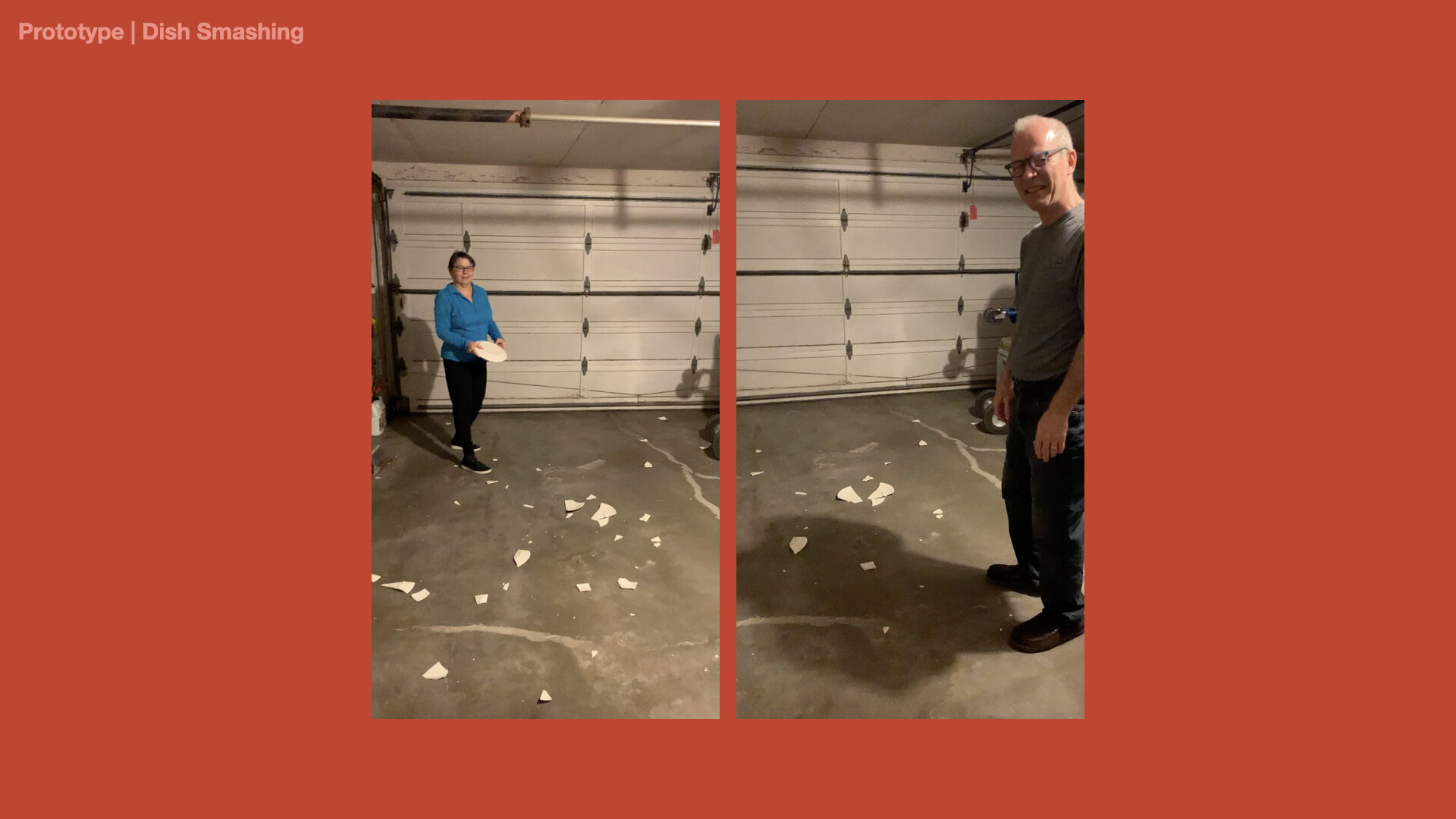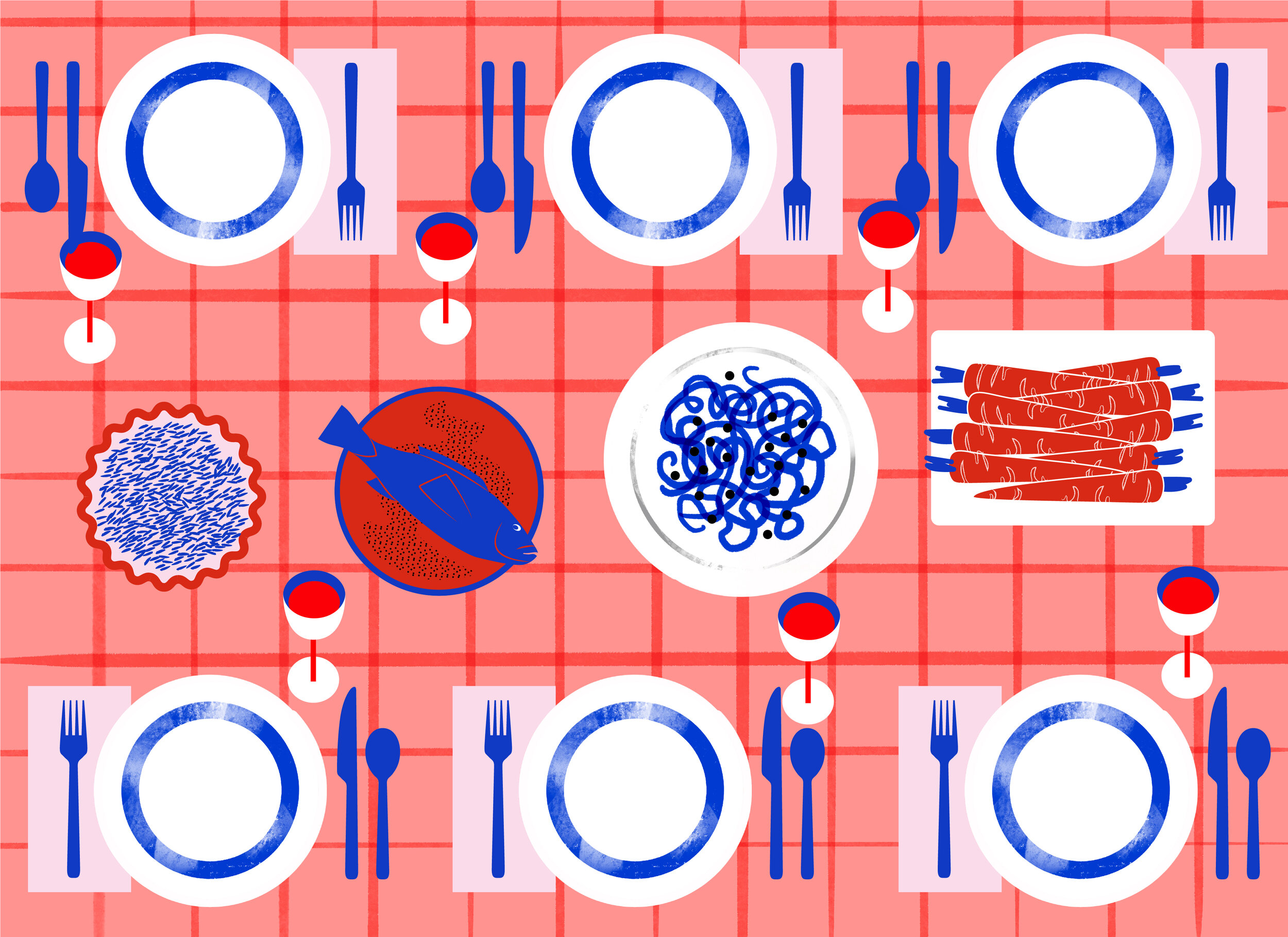
Tempered is an open source recipe for a dinner party experience design that serves as a platform for careful conversations about the personal and generational impact of misogyny.
Experience Design | Visual Design
Design Research
Experience Prototyping & Design
Visual Design
Challenge:
A generational culture of silence surrounding women’s experiences with misogyny and sexism created and preserves a hostile and dangerous environment where the emotional, physical and social impact of these experiences goes unrecognized and unaddressed. Conversations about these affronts are some of the most challenging to have as the reality of women’s lives, and the implications of what these experiences mean about our society at large, is painful to see and accept.
Goal:
Tempered aims to create an experience design framework for conversations about the individual and generational impact of misogyny and sexism. The recipe’s goal is to help women create a powerful and supportive space where individuals can share their experiences and reclaim their narrative while validating and embracing anger as an emotion of feminine power and change.
How it Works
-

The Recipe
The hostess starts by downloading and reading the Tempered recipe for creating her own Tempered dinner party experience. The recipe includes context into her role, a list of “ingredients,” step-by-step instructions for hosting the event, and experience asset templates such as like invitations and prompt cards.
-

The Invitation
As instructed by the recipe guidebook, the hostess invites her guests to the experience using the template invitation. The invitation serves as both literal invitation to the event and a metaphorical invitation to the conversation. Each guest is instructed to bring a dish that reminds them of an instrumental woman from their life.
-

The Dinner
The night of the event, guests gather and bring their prepared dishes. This dish serve aims to serve as an entry point into conversation and helps ease the guests into the Tempered experience.
-

The Hostess
The hostess welcomes everyone to the experience by clarifying that this dinner is a night where the usual rules of polite conversation and pretense do not apply. Using the prompt cards provided in the recipe booklet, she sets the dinner table rules and leads her guests through the experience.
-

The Conversation
Guests share about their dish, and which instrumental women it reminds them of, and identify a time they witnessed her identity or voice being diminished by men. Guests then share about a moment when their own voice or identity was diminished by men and the impact it has had on them.
-

The Catharsis
At the end of the dinner, guests are invited to perform a physical act of expressing and embracing their anger, smashing their dinner plates. The act of breaking the dish is designed as a moment of respite that is simultaneously uncomfortable, vulnerable, raw, dangerous, exhilarating and freeing. It is both physical release and claim to the guest’s lived experiences.
Final Vision
The vision for this project’s final stage is that women across the world, after hosting a Tempered dinner party, would send their broken plate shards to be included in a living gallery project — a growing mountain of broken plates that visually and physically represents women’s cumulative anger. This gallery would ideally be located in a city like New York City or at the big art shows like Art Basel or Frieze, as a way to bring a tangible representation of the voices of women who are typically outside of the conversations happening in these spaces.
This would represent an act of recognition — that the voices, stories and experiences of regular, everyday women matter — they deserve to be heard and seen.
Research | Process
I was drawn to the typology of a dinner party after reflecting on my own experience of gathering around my Grandma Patricia’s dinner table to engage in an evening of meaningful conversations. I was drawn to this role of hostess as a leader and societal influencer and its intersection with women’s traditional gender roles in the home and kitchen. I conducted research into how food, cooking, and eating has been used in experience design and the lexicon of the dinner party in feminist art. I was inspired by how dinner parties represented a space of powerful Feminine Voice in the way that they served as a space where women had ownership over creating the space — the right people, the right dishes at the right time— and the opportunity that exists in creating an experience rooted in feminine power and voice.
